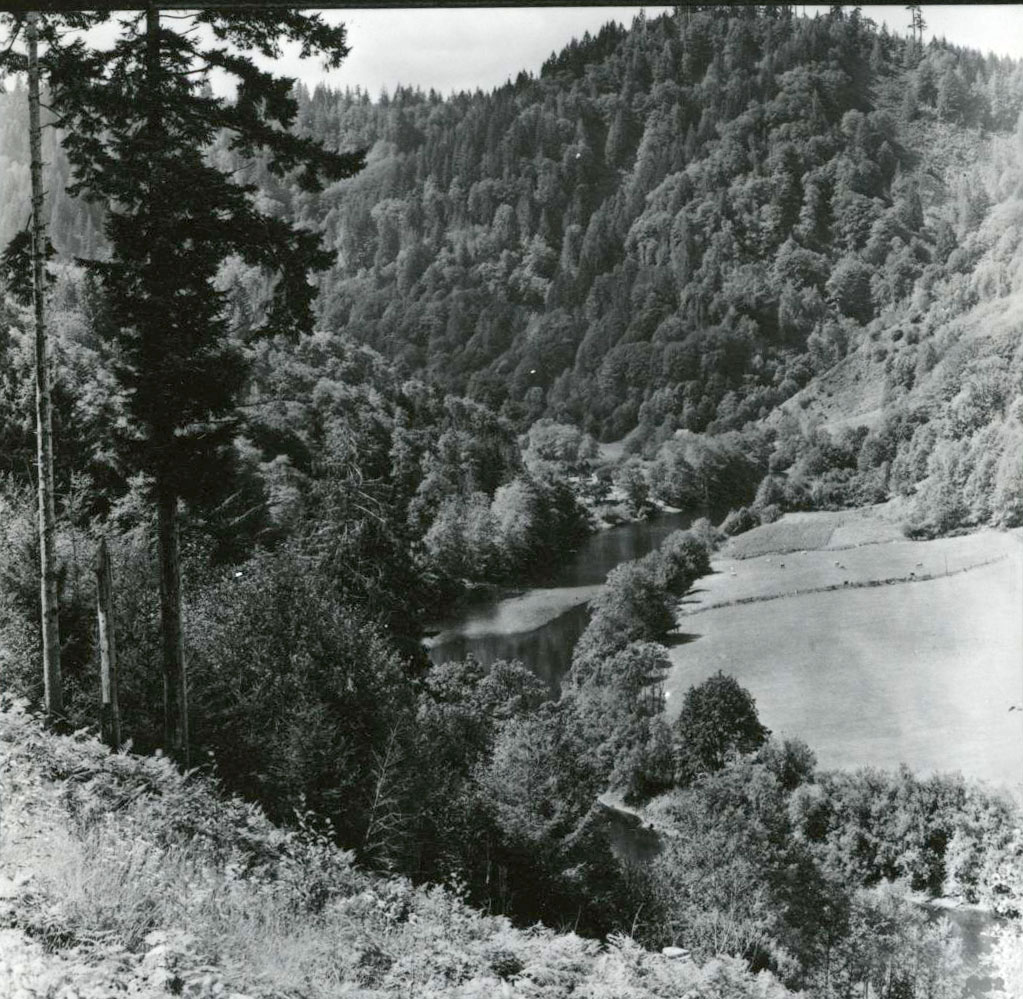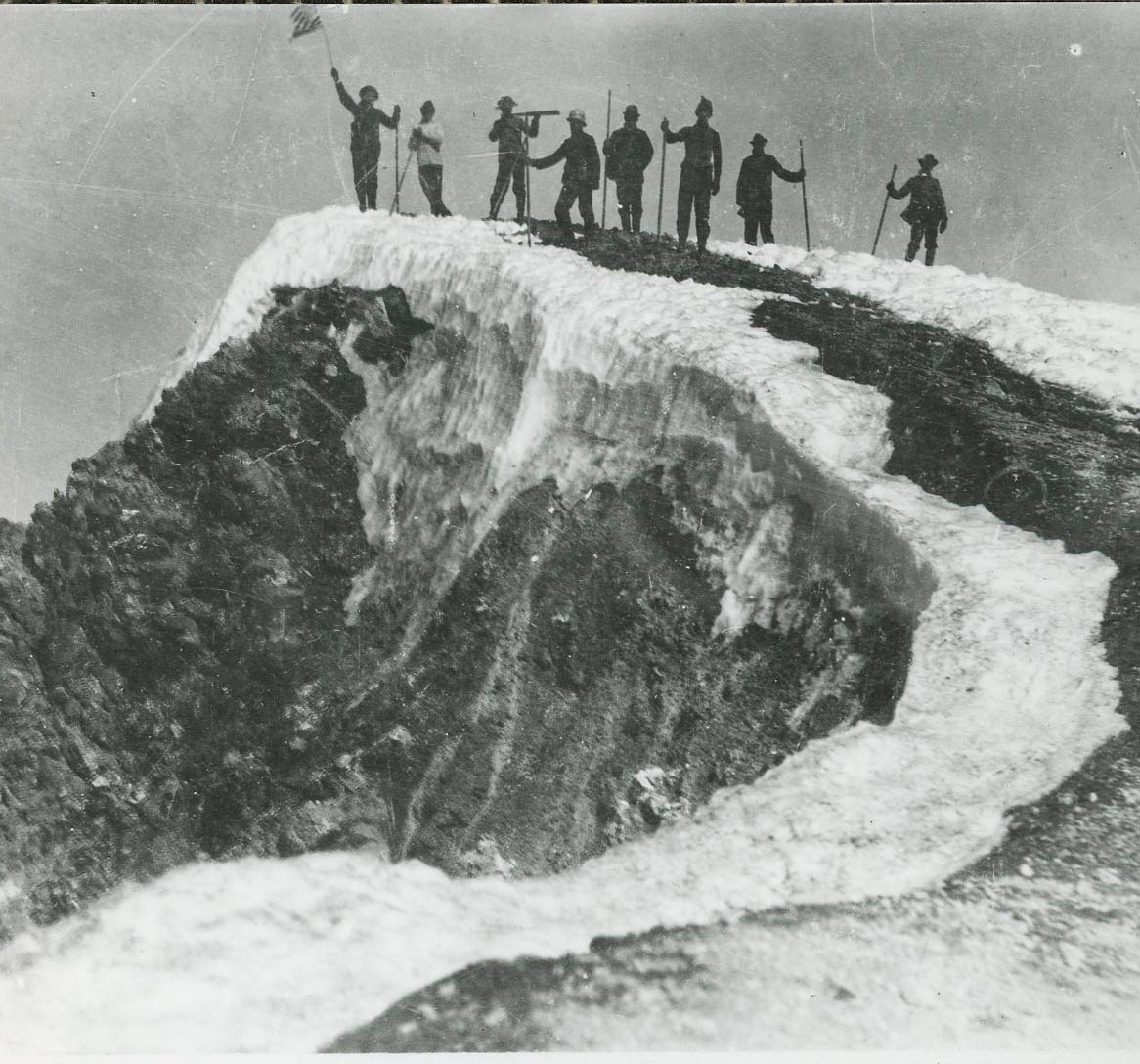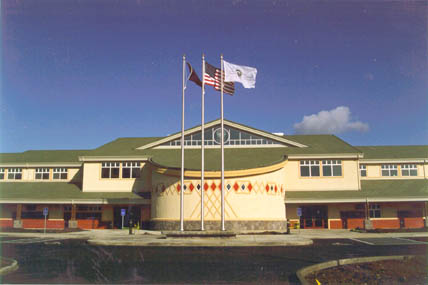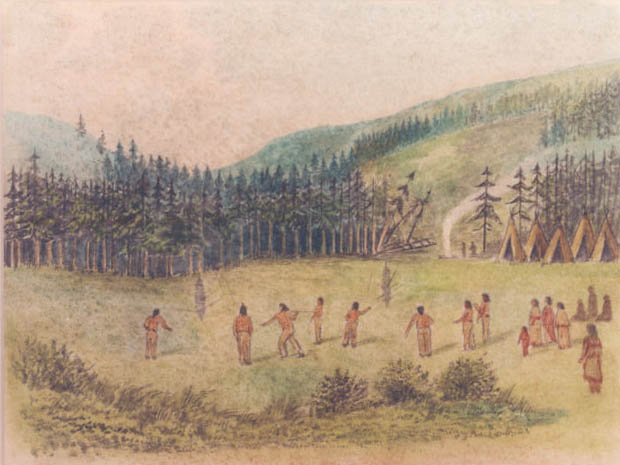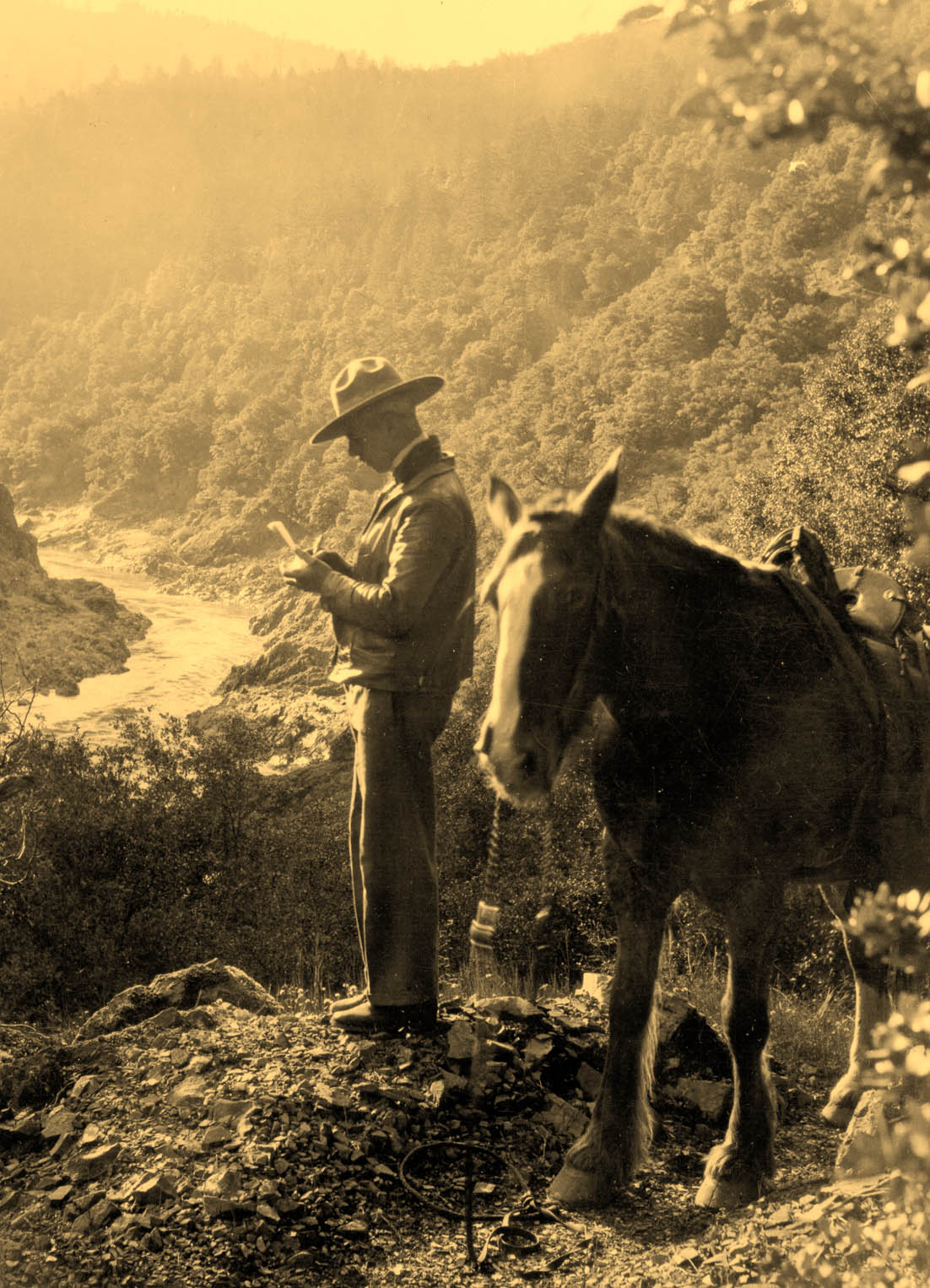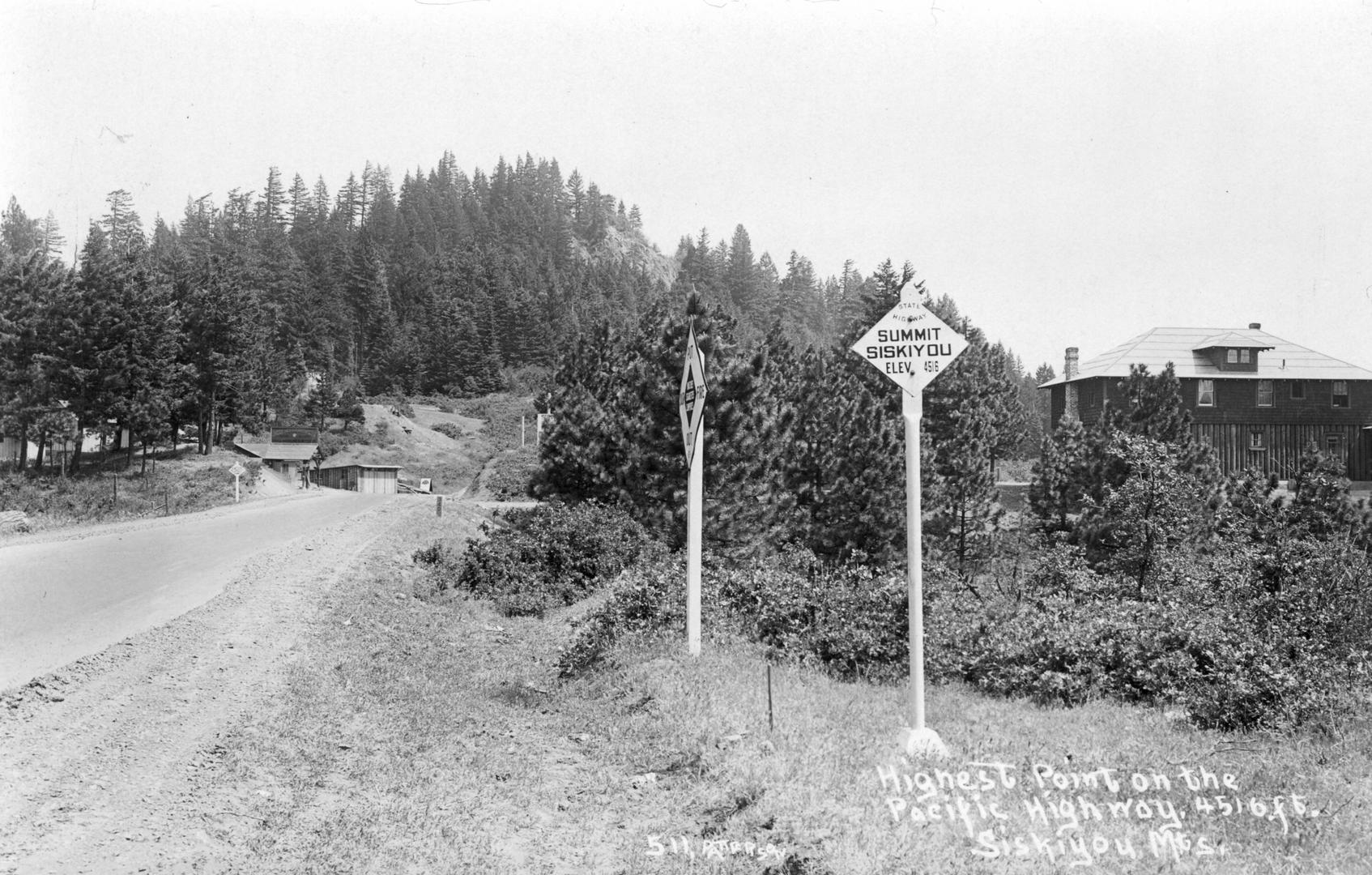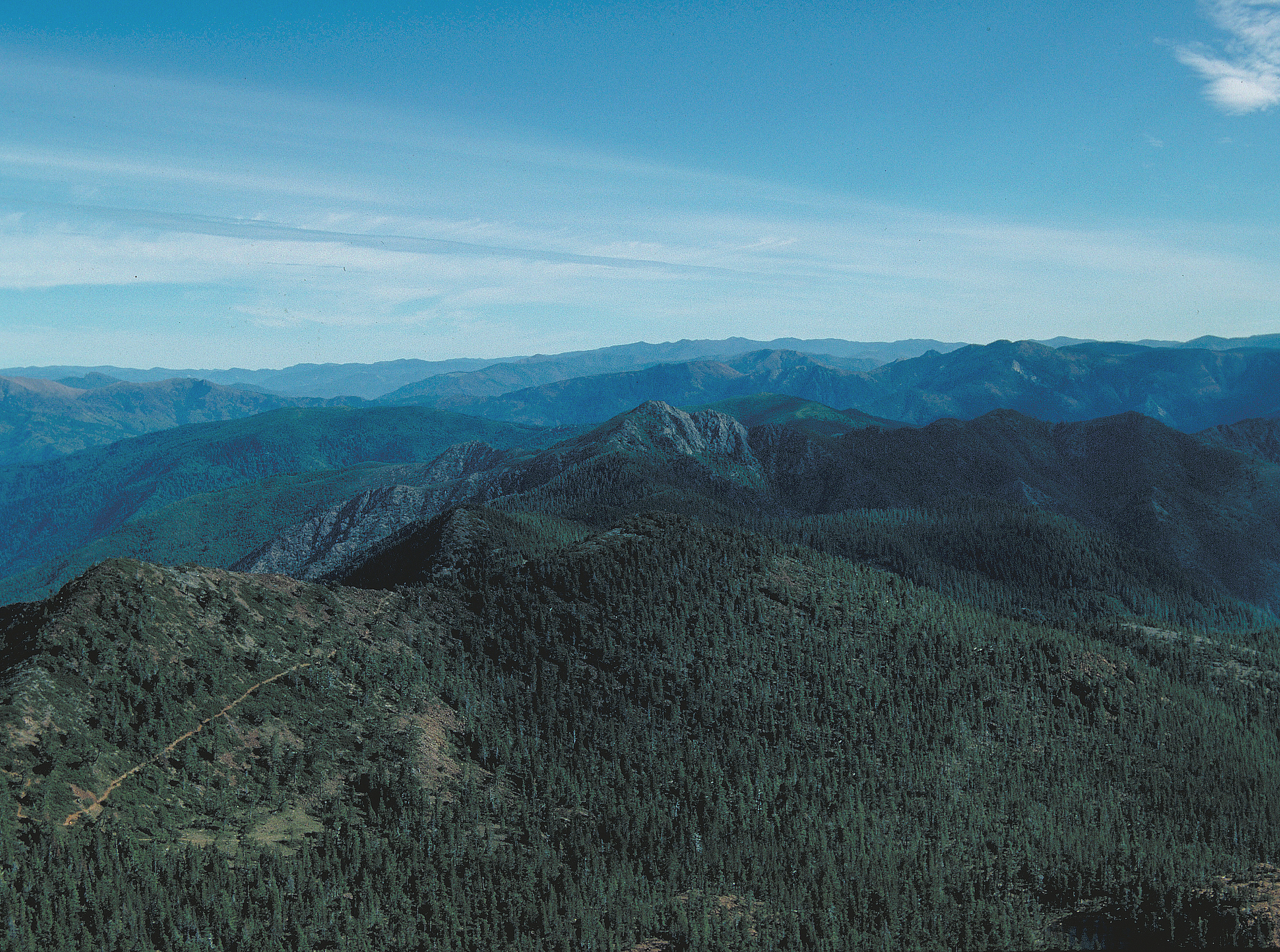“With towering fir forests, sunlit oak groves, wildflower-strewn meadows, and steep canyons, the Cascade–Siskiyou National Monument is an ecological wonder,” President Bill Clinton wrote in Proclamation 7318, which set aside and protected the distinct region in June 2000. Located at the edge of the Cascade and Siskiyou Mountains near the Oregon-California state line, it is “an area of unique geology, biology, climate, and topography” and one of the few National Monuments established primarily to preserve biodiversity.
Within the Cascade–Siskiyou National Monument, the Cascade Mountain Range, which runs the length of Oregon, meets the abundantly diverse Klamath Mountain ecoregion to the west. It is what the proclamation called a “biological crossroads,” where the unusual east-west orientation of the crest of the Siskiyou Mountains provides a corridor for the migration of coastal species inland. From east of the Cascades, species include pygmy nuthatches (Sitta pygmaea) and western juniper (Juniperus occidentalis), as well as residents of the moister western forests such as northern spotted owls (Strix occidentalis caurina) and Pacific giant salamanders (Dicamptodon tenebrosus). Disjunct Sierra Nevada populations of species such Brewer’s aster (Eucephalus breweri) add to the immense variety.
The monument was originally established at nearly 53,000 acres. In 2009, the Omnibus Public Lands Management Act designated the 21,155-acre Soda Mountain Wilderness within the Cascade–Siskiyou National Monument. In 2017, President Barack Obama’s Proclamation 9564 expanded the monument’s size to more effectively preserve the area’s biological diversity. The total area of 170,409 acres includes 112,928 acres of Bureau of Land Management land, 52,486 private acres, and 4,915 California State acres. The elevation ranges from 2,100 to 6,100 feet.
The plant communities in the Cascade–Siskiyou National Monument are a mosaic of conifer forest, oak woodlands, juniper scablands, shrub chaparral, open grasslands, wet meadows, and lush stream bottoms. In addition, the area’s ecology has been shaped by millennia of fires, both naturally occurring and managed by Natives and early settlers. Nearly seven hundred species of plants grow there, including rare and endemic plants such as Gentner’s fritillary (Fritillaria gentneri) and Greene’s mariposa lily (Calochortus greenei). The area has one of the highest diversities of butterflies in the United States, with over 120 species documented so far, including the rare Mardon skipper (Polites mardon).
Animal species in the Cascade–Siskiyou National Monument include mountain dwelling American pikas (Ochotona princeps), great gray owls (Strix nebulosa), Pacific fishers (Pekania pennanti), and threatened Oregon spotted frogs (Rana pretiosa). Protected gray wolves (Canis lupus) are known to use Cascade–Siskiyou National Monument territory, as do herds of Roosevelt elk (Cervus canadensis roosevelti). The Jenny Creek area is a center of freshwater snail diversity and is home to several endemic fish species found nowhere else, including the Jenny Creek sucker (Catostomus rimiculus). There are some two hundred species of birds.
The Cascade–Siskiyou National Monument incorporates several overlapping ecological designations, including the Soda Mountain Wilderness, the Mariposa Lily Botanical Area, the Horseshoe Ranch Wildlife Area, and two Research Natural Areas—the Oregon Gulch RNA and the Scotch Creek RNA. Pilot Rock is the most iconic geographic feature of the National Monument, rising dramatically 570 feet above the surrounding mountain ridges. The rock, formed of columnar andesite, originated as a volcanic plug some 25 million years ago. The highly visible landmark guided travelers coming from the south and east.
Echoing its biological crossroads, the Cascade–Siskiyou National Monument sits at an intersection of human interest and activity. Native Americans have used the area for some 10,000 years, and there are many resource-gathering, ceremonial, and archaeological sites in the monument. The area encompasses traditional lands of the Takelma, Shasta, Klamath, and Athapascan people who used the area in a seasonal cycle organized around the tending and harvesting of plant and animal resources. In the 1850s, the Native People of Southwest Oregon were rapidly displaced and forcibly removed to the Siletz and Grand Ronde Reservations by the U.S. government and the Oregon territorial authority. European Americans drawn to the area by the discovery of gold in 1850 participated in the violence, and the trauma and speed of removal resulted in a tremendous loss of knowledge, ecological understanding, and traditional stewardship practices by Native people of southwestern Oregon.
The monument lands are traversed by historic routes of European Americans into Southwest Oregon. The Applegate Trail crosses the CSNM east to west. Between 1846 and 1860 this trail was used by pioneers as an alternative southern branch of the Oregon Trail. Another historical trail in the monument is the Oregon California Wagon Trail or the Ewing Young Route which crosses the Siskiyou Pass between California and Oregon to the west of I-5. First established by Native Americans, the trail was used by the explorer Peter Skene Ogden in 1827 and later by gold miners and white settlers.
With settlement of the Rogue Valley in the 1850s, the lands of the Cascade–Siskiyou National Monument were used for timber harvest and livestock grazing, practices that continued into modern times. Establishment of the National Monument in 2000 and its expansion in 2017 put those uses at odds with the conservation mandate, which has been a source of political controversy for local communities. The 2017 expansion of the Monument is still being contested in the courts as of 2023.
The Cascade–Siskiyou National Monument supports recreational activities, including hunting, cross country skiing and other snow sports, camping, horseback riding, and hiking. The Hyatt Lake Recreation Area has developed campgrounds and other facilities, and the Pacific Crest Trail, which stretches from Mexico to Canada, traverses Monument lands. The Cascade-Siskiyou National Monument is visited by more than 130,000 people a year.
-
![]()
Cascade-Siskiyou National Monument.
U.S. Bureau of Land Management -
![]()
Cascade-Siskiyou National Monument map.
U.S. Bureau of Land Management -
![]()
Westerly view from Hobart Bluff in the southern Cascade Range showing the Siskiyou Mountains and Bear Creek Valley in the distance.
U.S. Bureau of Land Management -
![]()
Box O Ranch, Soda Mountain Wilderness, Cascade-Siskiyou National Monument.
U.S. Bureau of Land Management -
![]()
Pilot Rock in the Cascade-Siskiyou National Monument; Mt. McLoughlin in the distance, 2020.
State of Oregon, photo by Jad D'Allura
Related Entries
-
![Alsea Subagency of Siletz Reservation]()
Alsea Subagency of Siletz Reservation
In September 1859, Joel Palmer, the Superintendent of Indian Affairs fo…
-
![Athapaskan Indians]()
Athapaskan Indians
According to Tolowa oral histories, the Athapaskan people of southern O…
-
![Cascade Mountain Range in Oregon]()
Cascade Mountain Range in Oregon
The Cascade mountain system extends from northern California to central…
-
![Confederated Tribes of Grand Ronde]()
Confederated Tribes of Grand Ronde
The Confederated Tribes of Grand Ronde Community of Oregon is a confede…
-
![Indian Use of Fire in Early Oregon]()
Indian Use of Fire in Early Oregon
Anthropogenic (human-caused) fire was a major component of the Native s…
-
![Pilot Rock (geologic feature)]()
Pilot Rock (geologic feature)
Located east of Siskiyou Pass inside the Cascade-Siskiyou National Monu…
-
![Siskiyou National Forest]()
Siskiyou National Forest
The Siskiyou Forest Reserve was created on March 2, 1907; within two da…
-
![Siskiyou Pass]()
Siskiyou Pass
Siskiyou Pass, including the 4,310-foot-high Siskiyou Summit of Interst…
-
![The Siskiyou Regional Education Project]()
The Siskiyou Regional Education Project
The Siskiyou Regional Education Project, founded in 1983 in Takilma, Or…
Map This on the Oregon History WayFinder
The Oregon History Wayfinder is an interactive map that identifies significant places, people, and events in Oregon history.
Further Reading
Sawyer, John. “Beyond the Ancient Meeting Ground: Why are some localities exceptionally diverse?" In Northwest California: A Natural History. Oakland: University of California Press, 2006.
Annual Manager’s Report Cascade Siskiyou National Monument, 2015.
Proclamation 9564—Boundary Enlargement of the Cascade-Siskiyou National Monument, January 12, 2017.








